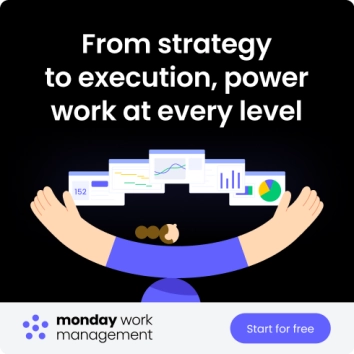Some project management terms are confusing. ‘Brainstorm,’ for example. How is a violent storm in your head a helpful way to solve problems? But ‘stakeholder’ is much simpler. They’re people holding a stake in your project, which means they have skin in the game.
When it’s your game, you need to know how to look after them. In this article, we’ll explain all you need to know about stakeholder theory, including what it is, why it matters, and how you can apply it to your projects.
TL;DR: Stakeholder theory is a business concept that says companies should create value for all stakeholders—not just shareholders—including employees, customers, and the community. For managers, this means actively involving these groups in project decisions to build trust and ensure success.
What is the core idea of stakeholder theory?
Stakeholder theory is a concept rooted in business ethics, first detailed by philosopher R. Edward Freeman. It states that any person or group affected by an organization’s actions is a stakeholder and that long-term success depends on creating value for all of them. This includes everyone from employees and customers to suppliers and the local community.
This approach goes beyond simple stakeholder management, which often focuses on mitigating risks posed by stakeholders. Instead, stakeholder theory is about integrity and active involvement. For project managers, it means giving stakeholders full visibility and a genuine opportunity to influence the project’s direction.
Stakeholder theory vs. shareholder theory: What's the difference?
The main difference lies in the primary focus of the business. Shareholder theory, the more traditional view, argues that a company’s main responsibility is to maximize profits for its shareholders. It’s a financially-driven model focused on prioritizing shareholder value.
Stakeholder theory, on the other hand, proposes a broader mission. It suggests that a business must also consider the interests of all its stakeholders. This includes employees, customers, suppliers, creditors, and even the wider community. The goal is to create shared value and achieve sustainable success by balancing the needs of all parties involved.
Why is stakeholder theory important for your business?
Adopting stakeholder theory isn’t just about ethics; it’s good for business. By considering a wider range of interests, companies can build stronger relationships, enhance their reputation, and foster long-term loyalty.
Key benefits include:
- Improved Risk Management: Engaged stakeholders can help identify potential risks earlier.
- Increased Innovation: Diverse perspectives from different stakeholder groups can lead to more creative solutions.
- Enhanced Reputation: A commitment to corporate social responsibility builds trust with customers and the community.
- Higher Employee Engagement: When employees feel valued as key stakeholders, their morale and productivity often increase.
How to implement stakeholder theory in 4 steps
Putting stakeholder theory into practice requires a structured approach. Here’s a four-step process to get you started.
Step 1: Identify your stakeholders
First, you need to identify who your stakeholders are. They can be internal—like your project team or executives—or external—like customers, suppliers, or government agencies. It’s helpful to brainstorm a comprehensive list to ensure no one is overlooked.
Step 2: Analyze stakeholders with a power-interest matrix
A classic way to analyze stakeholders is by using a power vs. interest matrix. Part of your stakeholder analysis will be determining what they can contribute. This simple 2×2 matrix helps determine how best to manage stakeholders by plotting them on a grid based on their level of power over the project outcome and their level of interest in it.
- Manage Closely (High Power, High Interest): These are key players. You should fully engage them and make the greatest efforts to satisfy them.
- Keep Satisfied (High Power, Low Interest): Put enough work in with these people to keep them satisfied, but not so much that they become bored with your messaging.
- Keep Informed (Low Power, High Interest): Adequately inform these people, and talk to them to ensure that no major issues are arising.
- Monitor (Low Power, Low Interest): Monitor these stakeholders, but do not bore them with excessive communication.
Step 3: Develop a stakeholder engagement plan
Once you understand your stakeholders, you need a plan to engage them. This involves deciding how and when to communicate with each group and what level of involvement is appropriate for them. A key part of stakeholder theory is involving them in decision-making, so understanding which groups to seek input from on specific project elements is crucial.
Step 4: Communicate and report on progress
Effective engagement relies on clear and consistent communication. Give stakeholders visibility into the project’s progress, challenges, and outcomes. This builds trust and ensures everyone stays aligned. A well-defined stakeholder communication plan is essential for keeping everyone in the loop.
Poorly managed dependencies are a common cause of project failure. Capturing how tasks relate to each other in a Gantt chart makes it easier to track the impact of changing tasks and take action as required.

Manage stakeholders seamlessly with monday.com
Applying stakeholder theory is much easier with the right platform. monday.com Work OS provides all the features you need to identify, analyze, and engage your stakeholders effectively.
- Centralize Information: Use a monday.com board as your stakeholder register to track every stakeholder, their interest level, and your engagement plan.
- Visualize Progress: Share customizable Dashboards and Gantt charts to give stakeholders real-time visibility into project timelines and progress.
- Streamline Communication: Use automations to send status updates automatically, and collaborate directly on tasks to keep everyone aligned. You can even use monday.com’s AI Assistant to quickly draft stakeholder update emails or summarize feedback from meetings.
- Gather Feedback: Collect input easily using monday.com Forms, ensuring every stakeholder has a voice.
By embracing stakeholder theory, you build trust, foster collaboration, and ultimately drive better project outcomes. It’s about creating value for everyone involved.
 Get started
Get started 


